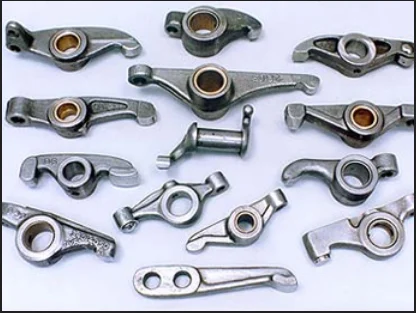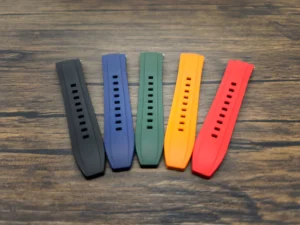Cutting Tools for Engine Parts: The Backbone of Precision Manufacturing
Today’s vehicles rely on tightly made engine pieces that function well even under challenging conditions. The crankshaft, camshaft, pistons, connecting rods, cylinder heads, and valve seats are all important parts for an engine, and all need to be machined accurately. Cutting tools for engine parts in this industry are designed to produce complex shapes and work perfectly on hard materials. Today’s precision tools enable companies to ensure tight control over product specifications and decrease waste. To work effectively, you need the right tooling for the high demands of this sector.
The Role of Cutting Tools in Engine Manufacturing
Cutting tools for engine parts are crucial in shaping and finishing important parts when making engines. All methods of cutting will achieve nice, smooth finishes and the required size if the right cutting tool is selected. HSS, carbide, ceramics, and PCD are the common choices for making cutting tools. Different materials are picked according to the machine part and how precise it has to be. High-speed cutting often relies on carbide inserts because they are both tough and don’t wear down at high temperatures.
Specialized Tooling for Complex Part Geometries
When engines grow smaller, lighter, and more efficient, the parts within them become more diverse. Because the work is so complex, it requires equipment that is specially designed for narrow and unusual areas. To drill oil passages, deep-hole drills are used, while precision reamers are selected for finishing the bore of a valve guide. In addition to fitting into the engine, these tools must keep up their performance and not cause either chatter or deflection. Many manufacturers depend on custom-designed tooling to meet various challenges and reduce cycle time without affecting part quality.
Advances in Tool Coatings and Materials
The coatings on tools have developed extensively to enhance cutting performance and tool life. Typical coatings such as titanium nitride (TiN), titanium aluminum nitride (TiAlN), and diamond-like carbon (DLC) reduce friction and enhance heat resistance. The coatings allow the tools to run at elevated speeds and decrease wear when machining dry or semi-dry. Ceramic and cermet cutting tools are also gaining traction due to their capability of extreme heat resistance and cutting-edge stability. With these, tool life can be extended, downtime minimized, and process efficiency enhanced overall.
Importance of Tool Holding and Rigidity
The performance of a cutting tool highly relies on how it is secured and maintained. It is important for tool holders to be secure and steady to avoid the tools from bending and shaking during machining. Most engine machining today makes use of hydraulic chucks, shrink-fit holders, and high-precision collets to improve stability. No matter how excellent a tool is, it won’t work properly unless you hold it just right. A well-organized tooling setup ensures stable chips and protects the tools from becoming damaged, creating easier production and better finished parts.
The Role of Cutting Tools in Engine Manufacturing
In the automotive sector, tools are designed with a priority on how fast, how efficient, and how reliable they can be. With indexable cutting tools, you can replace just one insert without the need to unclamp the entire tool. Such systems also help to reduce machine downtime. Also, tools that handle different operations simultaneously reduce setup times and increase the throughput. Manufacturers aim to adjust their prices, speeds, and the lifespan of their tools to remain competitive without letting go of top quality.
Tooling Solutions for High-Volume Production
Industry 4.0 is making it possible for smart technology to change the way engine components are manufactured. While it is cutting, the tool’s sensors monitor its wear, the temperature, and the force of each made cut. Intelligent tools help gather data that supports using predictive maintenance, choosing the right cutting settings and preparing to minimize unexpected breaks. When machines are networked, offsetting tools and monitoring their status becomes automatic. Using an intelligent system, checking goods, preventing mistakes, and achieving quality is easier with high-volume batch processing.
Surface Finish and Dimensional Accuracy
Ensuring high accuracy and good surface finish is a major responsibility of cutting tools. Having a smooth surface on engine parts matters greatly when it comes to places where rubbing or liquid movement occurs. There are specific roughness average (Ra) guidelines for cylinder bores, valve seats and crankshaft journals. Dimensional correctness guarantees that parts connect properly and perform according to plan. Having the right shape of cutting tool and using proper feed and speed enables machines to produce the same results all through long runs.
Conclusion
Cutting tools for engine parts are the unsung heroes of Automotive Tooling Solutions. They adjust and improve every element needed for a reliable and smooth-running engine. Whether it’s a basic drill bit or a sophisticated multi-functional cutter, all tools help achieve proper performance, safety, and efficiency. With advanced engine designs and higher production rates, factories need tools that are innovative, tough, and accurately made more than ever. Manufacturers rely on TOTIME TOOLS because it supplies them with up-to-date solutions for maintaining quality, reducing money spent and staying in business.
Frequently Asked Questions (FAQs)
Q1: What are some of the most common cutting tools found in engine manufacturing?
Cutting tools for engine components, such as carbide inserts, HSS drills, reamers, and end mills, are extensively utilized in engine manufacturing. They perform operations such as turning, milling, drilling, and finishing.
Q2: Why are coated cutting tools used in Automotive Tooling Solutions machining?
Engine part cutting tools dissipate heat, are wear-resistant, and have longer life, which makes them suitable for machining at high speeds. TiN and TiAlN coatings enable tools to operate in harsh conditions.
Q3: What are the challenges that manufacturers face when machining engine parts?
Manufacturers typically have to contend with hard materials, tight tolerances, and complex geometries. Tool wear, vibration, and surface finish maintenance are perpetual issues.
Q4: How do smart tools enhance engine component manufacturing?
Smart tools possess sensors that track wear, force, and temperature in real time. Smart tools prevent failure, minimize downtime, and enhance process control.










